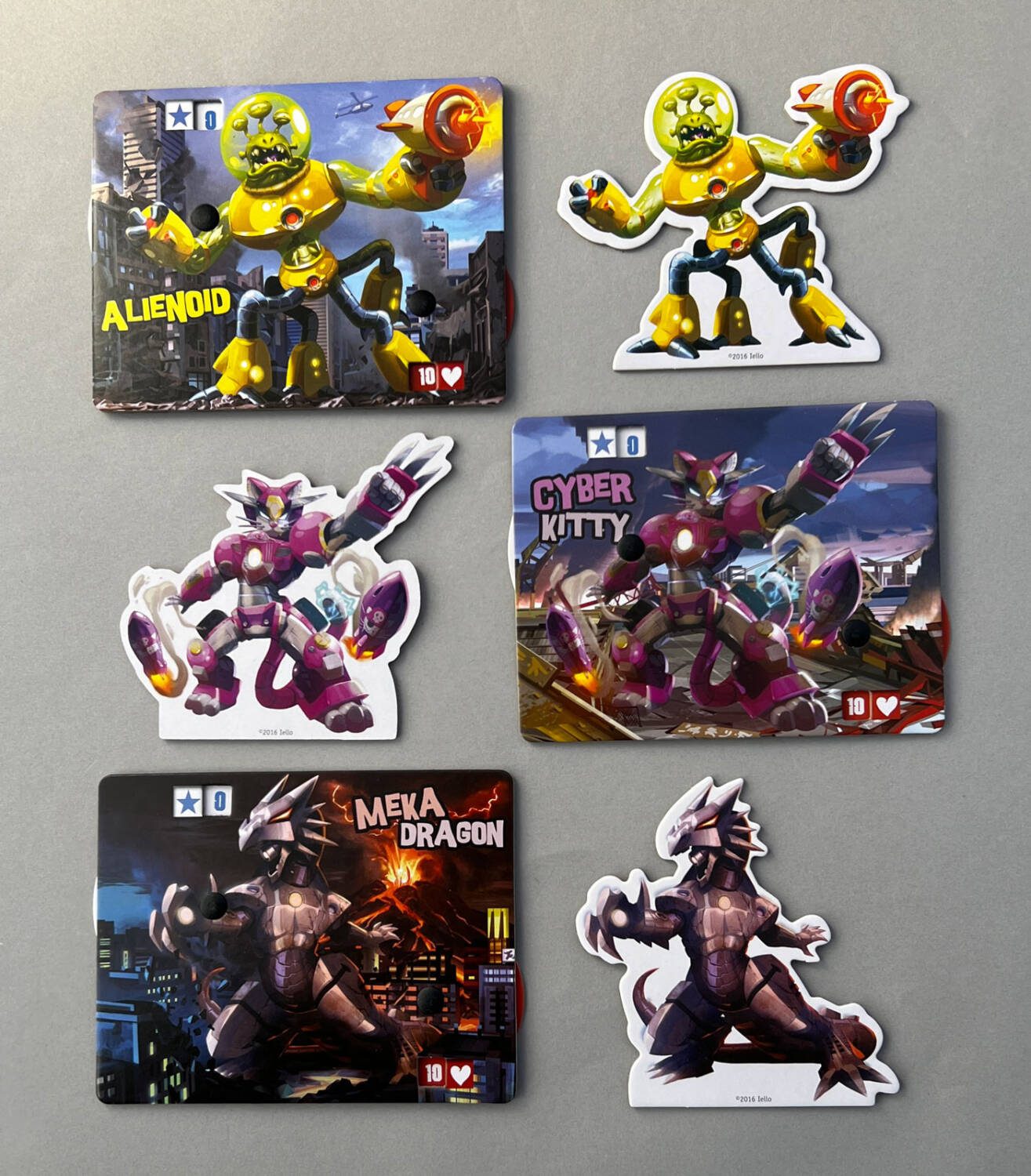Return to the beleaguered city of Tokyo—now with the addition of Tokyo Bay—as our monsters slug it out once again for domination and to claim victory.
If you’re new to King of Tokyo, I went over the setup and gameplay in my recent review of King of Tokyo: Origins. (Known from here as KoT: O) That game comes with four monsters, each lacking in special abilities and rendering them disappointingly interchangeable. King of Tokyo: Monster Box (KoT: MB), a fully stand-alone game, solves that problem in a big way.
Let’s start with some of the basics, though.

KoT:MB comes with its own big deck of monster cards.

From my games, these can be mixed in with the KoT:O cards if you want even more options.
KoT:MB also comes with two sets of dice, one in black & green and one in orange & black. The orange set was initially included in the King of Tokyo Halloween expansion. There is no difference between these sets of dice. If you play with a group of four, as I did for one of my plays, you can keep a set of dice at each end of the table.
KoT: MB comes with ten different monsters and their corresponding score tracker. The artwork gives each monster a distinct personality.

Even better, each of the KoT:MB monsters comes with the Power Up! Expansion cards. The game calls these Evolution cards and each set is unique for each monster. For instance, let’s take a look at the Space Penguin:

A combination of an angry penguin and the Cool, Cruel Mister Freeze, eh?
Like all the KoT: MB monsters, Space Penguin comes with eight Evolution cards.

At the start of the game, each player shuffles their monster’s Evolution cards. They then draw two of them, keeping one and discarding the other. These cards grant either a Temporary or a Permanent ability to your monster. You’ll read your chosen card aloud to the other players and place it face up next to you.
Any time you roll three Hearts, you can take the top two Evolution cards from your deck and choose one to keep.
As you can see from Space Penguin’s Evolution cards, some are generic powers, others make sense for a monster from the Antarctic. This is standard for each monster’s Evolution cards.
Thoughts
To paraphrase myself from my KoT: O review, I am not a big fan of dice games. Throwing dice feels like I’m throwing away choices and decisions I’d rather make myself. Like KoT: O, KoT: MB was a game I knew the others in my weekly gaming group would love (they did) so I was willing to set aside my prejudices for the sake of a game that was nothing but chucking dice.
KoT: O is a fine introductory King of Tokyo game, especially for younger kids who might not notice the lack of monster-specific abilities. KoT: MB not only adds a lot more monsters, but the Evolution cards that greatly improve the game. It’s not so much that they give you devastating powers, it’s more that they create minor changes that make the game more engaging.
After our first play of KoT: MB, we immediately chose new monsters and Evolution cards and played a second game—and then a third. At the end of the evening, we all agreed that we would incorporate the KoT: O monsters into KoT: MB and choose random Evolution cards for those monsters to play. Playing without the Evolution cards just didn’t sound like much fun.
KoT: O can only play up to four players; KoT: MB can play up to six. At five or six players, two monsters attack the city: one in Tokyo itself and the other in Tokyo Bay. The rules remain the same, but with twice the chance to be attacked by everyone/attack everyone.
King of Tokyo: Monster Box is not going to land on anyone’s Best Strategy Game list, but that’s okay. I wouldn’t call it ‘stupid fun’ like B-Movies, but it is a fun dice-chucker with lots of Take That moments and laughs.












Add Comment